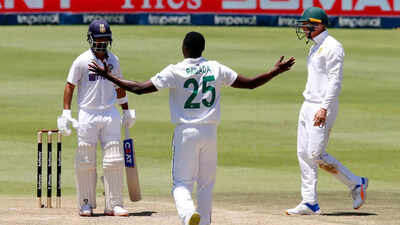

Gritty, tough and calm at the crease in an era where the likes of the Windies bowling attack made batting a life-threatening pursuit, Chappell’s brilliance was evident until the end, smashing five centuries in his last 19 innings – including 182 against Pakistan in his final Test dig in 1984. Meanwhile, Chappell’s highest Test score was 247 not out at the Kiwis’ expense in 1974, which he backed up with 133 in the second innings. When Wisden named their 100 greatest Test innings in 2001, he had three entries: 182* against West Indies in Sydney in 1975/76 (26th), 204 versus England in Sydney in 1980/81 (52nd) and 176 against New Zealand in Christchurch in 1981/82 (62nd).
TEST CRICKET SCORING SERIES
The most talented of a trio of Test-playing brothers, Chappell scored a century on debut at the WACA against England in 1970 – the first of 24 Test tons he would amass in 87 matches.ĭespite missing two years in the Test arena during the World Series Cricket revolution, Chappell racked up 7,110 runs at the stellar average of 53.86. Several Australian batsmen have been lavished with the ‘best since Bradman’ label, but few received it as categorically as 1970s and ‘80s star Greg Chappell. He scored three centuries in a heavy four-Test series loss in England in 2011, bowing out after the subsequent series in Australia in the southern hemisphere summer.

He then put his skill and iron will on display for Australia crowds during the 2003/04 summer, scoring 619 runs at 123.8 – including 233 and 72* at Adelaide.ĭravid’s highest Test score came against archrivals Pakistan in 2004, scoring 270 at Rawalpindi, and triple-figure scores flowed consistently for the remainder of his magnificent career. But after gradually establishing himself as an integral part of India’s line-up in the late-1990s, Dravid came of age with a memorable 180 against Australia in Kolkata in 2001 as the hosts recovered from a 274-run first-innings deficit to win handsomely. He scored 36 Test centuries, though just one in his first 22 matches (he was out in the eighties or nineties eight times during that period). Debuting in 1996, Dravid scored 13,288 runs in 164 Tests – a total that ranks behind only Tendulkar, Ponting and Kallis – at an average of 52.31. Regarded as being one of the last ‘classical’ Test batsmen, Indian legend Rahul Dravid provided the stability and orthodox genius to complement the explosive brilliance of teammates like Tendulkar and Sehwag. The careers of all-time greats Ken Barrington, Matthew Hayden, Steve Waugh, Mahela Jayawardene, Everton Weekes and Javed Miandad were also picked apart in compiling this list.ĭespite the inevitable howls of protest – which we always welcome in the form of vigorous discussion – we’re pretty happy with this list: 15. Grace and Victor Trumper, unforgettable figures whose achievements would have pushed into this list if they had been give the chance to play enough cricket in the Test spectrum. Similar fates befell South African icons Barry Richards and Grame Pollock, West Indies legend George Headley, and pioneering champions W.G. Smith, who seems destined for ‘best since Bradman’ repute by the time he retires, came under brief consideration thanks to his astonishing efforts, but five summers as a permanent Test player was ultimately too small a sample size. The top half-dozen more or less pick themselves – though the order in which to place them was much trickier – but after that it becomes much harder. As debate swirls around Australian captain Steve Smith’s ascent to all-time great batsmen status after a stellar Ashes series, it seems as good a time as any to reopen to the perennial debate – who are the greatest to wield the willow in Test cricket?


 0 kommentar(er)
0 kommentar(er)
